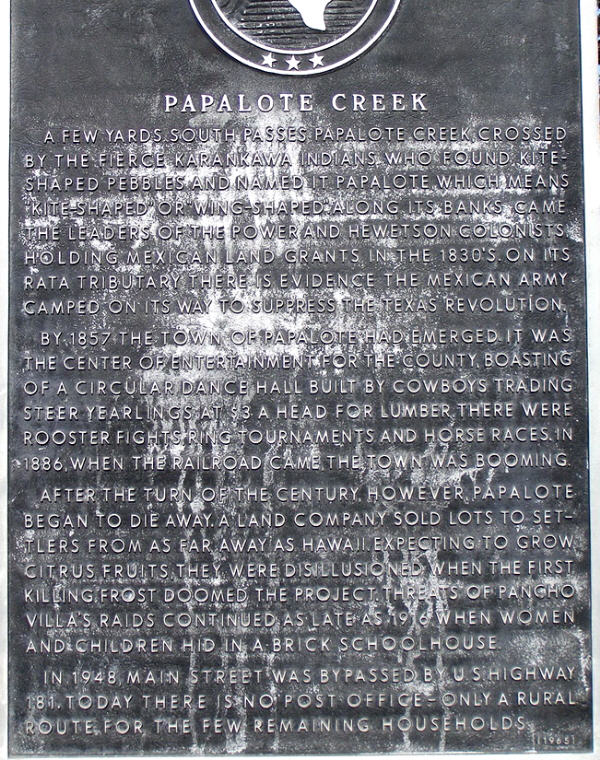Papalote Creek
 on U.S. 181, south of Papalote in roadside park north of bridge
on U.S. 181, south of Papalote in roadside park north of bridge
A few yards south passes Papalote Creek, crossed by the fierce Karankawa Indians who found kite-
shaped pebbles and named it Papalote, which means "Kite-Shaped" or Wing-Shaped. Along its banks came the leaders of the
Power and Hewetson colonists, holding Mexican land grants in the 1830s. On its Rata tributary there is evidence the
Mexican Army camped on its way to suppress the Texas Revolution. By 1857 the town of Papalote had emerged. It was the
center of entertainment for the county, boasting of a circular dance hall built by cowboys trading steer yearlings at $3
a head for lumber. There were rooster fights, ring tournaments and horse races. In 1886, when the railroad came, the
town was booming. After the turn of the century, however, Papalote began to die away. A land company sold lots to
settlers from as far away as Hawaii. Expecting to grow citrus fruit trees, they were disillusioned when the first
killing frost doomed the project. Threats of Pancho Villa's raids continued as late as 1916, when women and children hid
in a brick schoolhouse. In 1948, Main Street was bypassed by U.S. 181. Today there is no post office - only a rural
route for the few remaining households.

